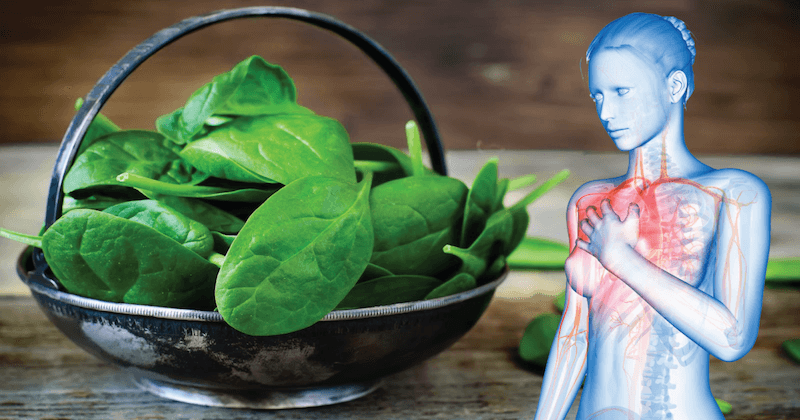
With over 80% of the American population being chronically deficient in magnesium, consuming magnesium-rich plant foods isn’t just an option – it is a MUST. Magnesium is a mineral needed for more than 300 biochemical reactions in the body – so we can see why a chronic deficiency in this mineral could lead to a host of different problems in the body, some that may be classified as an illness that may just simply be a deficiency.
Among the 300 different enzymatic reactions that magnesium is required for in the body, it is responsible for activities like proper bowel function, heart muscle contraction, relaxation of blood vessels, regulation of blood sugar levels, proper bone and teeth formation, creation of ATP (energy molecules of the body), and reduces cancer risk.
On the topic of magnesium and cancer risk, over 46% of patients admitted with cancer are magnesium deficient. Given that magnesium is required for glutathione (the body’s most powerful antioxidant) to function properly, it is no wonder the rate is so high. When an ample supply of magnesium is present, the body can protect itself from heavy metals, environmental chemicals, pesticides and herbicides, all major factors that determine your risk for developing cancer.
Unfortunately, a lot of the magnesium content in fresh produce today has seen declines from 25-80% since pre-1950. This, combined with poor food choices, have resulted in the drastic magnesium deficiencies we see in populations today.
Processed foods are almost completely devoid of magnesium, and thanks to poor agricultural practices, soil magnesium declines are found as high as 40% (compared to levels documented in the 1950s). Growing populations and demand for more food have favoured the selection of quality over quantity. The demand for higher yields have led farmers to select for fast-growing crops where vegetables and fruit have very little time to make or uptake a sufficient amount of nutrients.
Not only growing rate, but pesticides also destroy organisms that are essential for providing nutrients to the plant. Earthworms and vitamin-fixing bacteria in the soil have been nearly completely removed from American crop land, producing vegetation with poor nutrient quality.
Buying local, growing your own, and focusing on organic is your best bet for getting higher-quality produce.
I personally take a magnesium supplement 1-2 times a week, because I do so much hot-yoga (Bikram) and dance (my muscles really appreciate it!). If I lived in optimal living conditions where I knew what was in my soil, and was certain my produce was nutrient-dense, I would not be doing so. I like to use Mother Earth Minerals as their magnesium supplement is readily bio-available and not loaded with fillers – it’s just pure sublingual liquid magnesium! This is not a sales pitch, just my honest review and a company that I trust.
Symptoms of Magnesium Deficiency
If you aren’t getting adequate magnesium intake, you will experience some of the following symptoms:
- Sensitivity to noise
- Sleep disorders
- Frequent headaches
- Infertility
- Digestive issues
- Temperature swings
- Depression
- Tightness of the muscles
Make sure you’re getting enough magnesium before these symptoms occur!
As for amounts that should be consumed, it is recommended that men get around 320 mg of magnesium per day, whereas women should aim for 230 mg per day.
Top 25 Magnesium-Rich Plant Foods
Here are the top plant-based foods highest in magnesium (per 100g or 3.5 oz.):
Cacao (272 mg, 68% DV)
Hemp Seeds (per 1/4 cup – 256 mg, 64% DV)
Pumpkin Seeds (per 1/4 cup – 184 mg, 46% DV)
Chia Seeds (per 1/4 cup – 130 mg, 34% DV)
Sesame Seeds (per 1/4 cup – 126 mg, 32% DV)
Sunflower Seeds (per 1/4 cup – 113 mg, 29% DV)
Cashews (per 1/4 cup – 110 mg, 27% DV)
Almonds (per 1/4 cup – 100 mg, 25% DV)
Spinach (79 mg, 20% DV)
Swiss Chard (81 mg, 20% DV)
Tempeh (77 mg, 19% DV)
Beet Greens (70 mg, 17% DV)
Black Beans (70 mg, 17% DV)
Quinoa (64 mg, 16% DV)
Bananas (1 cup mashed – 61 mg,15% DV)
Navy Beans (53 mg, 13% DV)
Buckwheat (51 mg, 13% DV)
Pinto Beans (50 mg, 12% DV)
Green Peas (33 mg, 8% DV)
Turnip Greens (31 mg, 8% DV)
Avocado (29 mg, 7% DV)
Beets (23 mg, 6% DV)
Broccoli (21 mg, 5% DV)
Zucchini (17 mg, 4% DV)
Figs (17 mg, 4% DV)


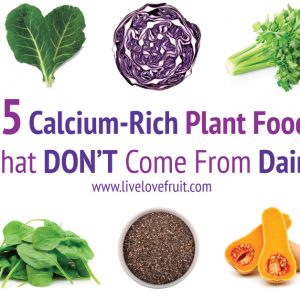
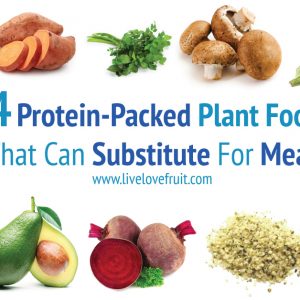
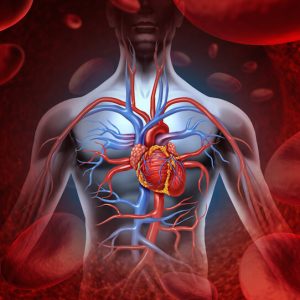
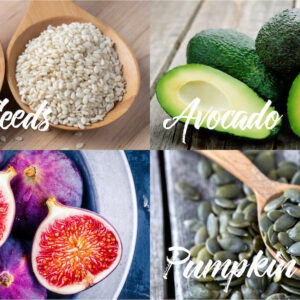


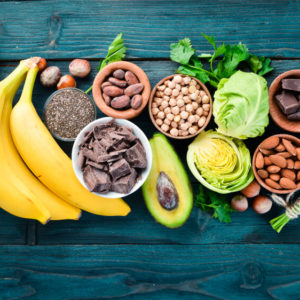
Fantastic article full of important information!!! Thank you very much!!! Bob
Glad it helped Bob! 🙂